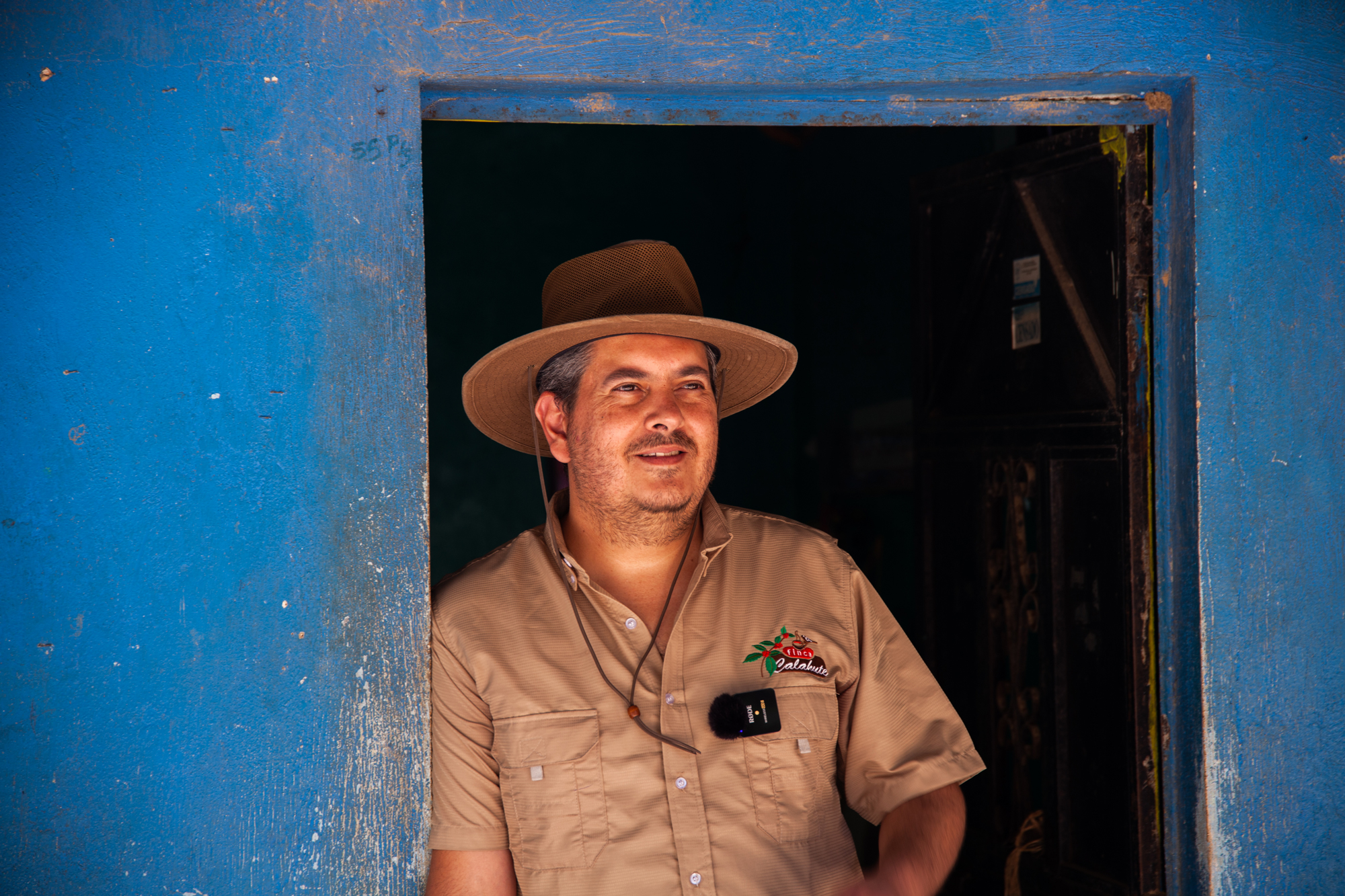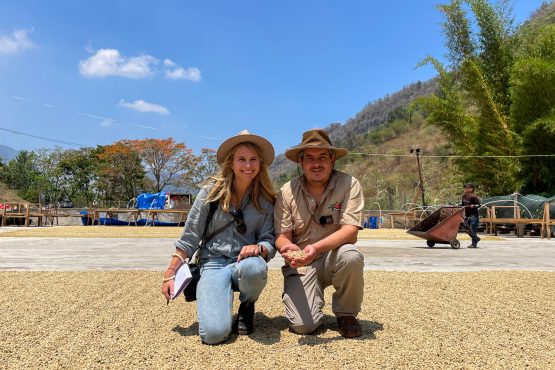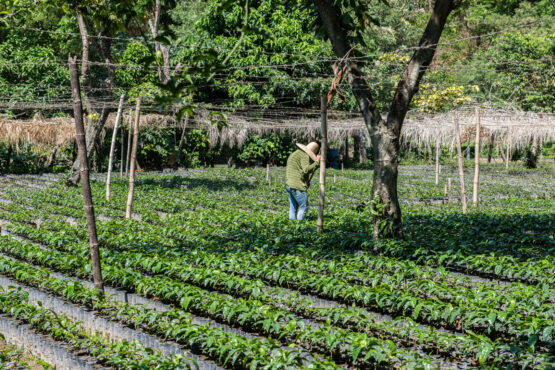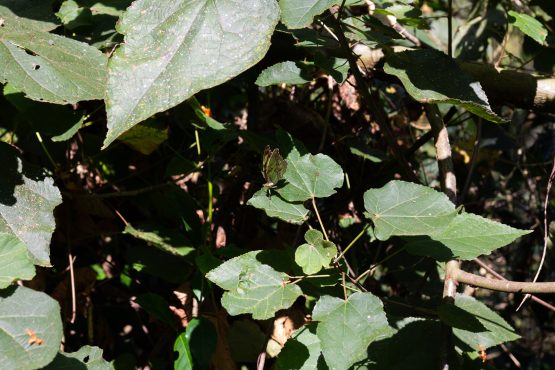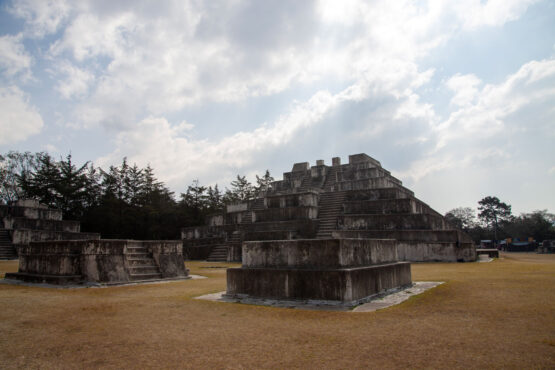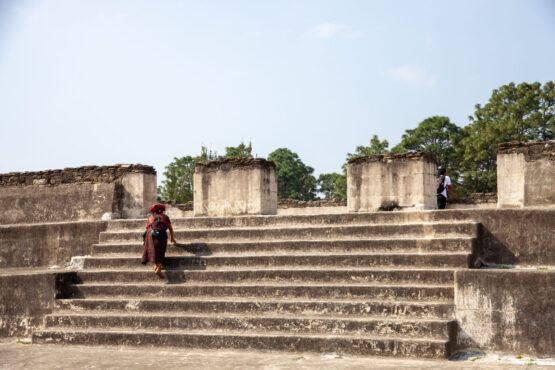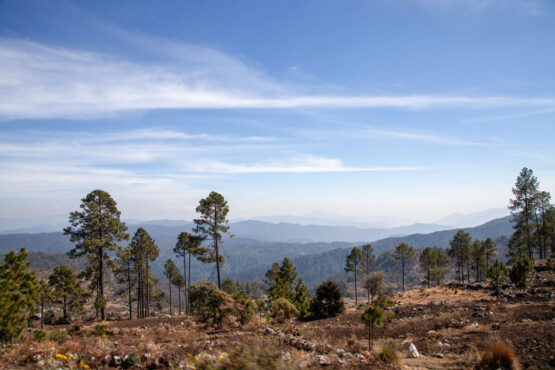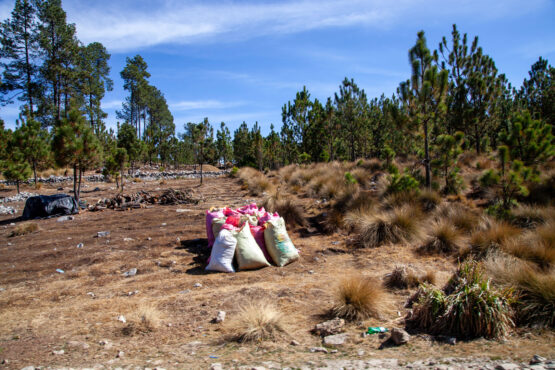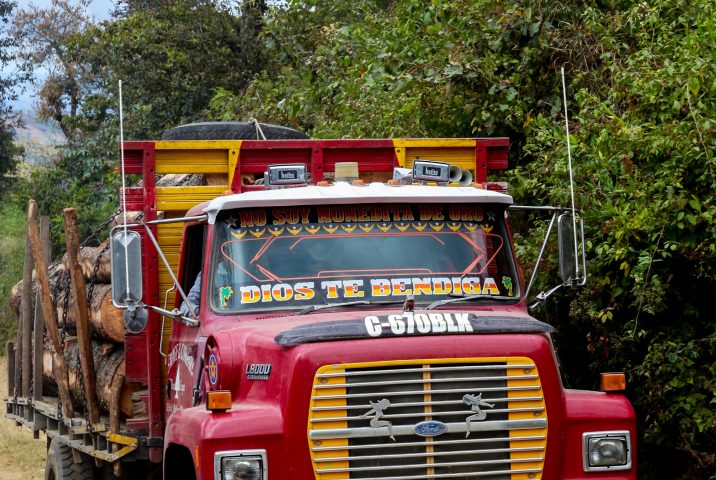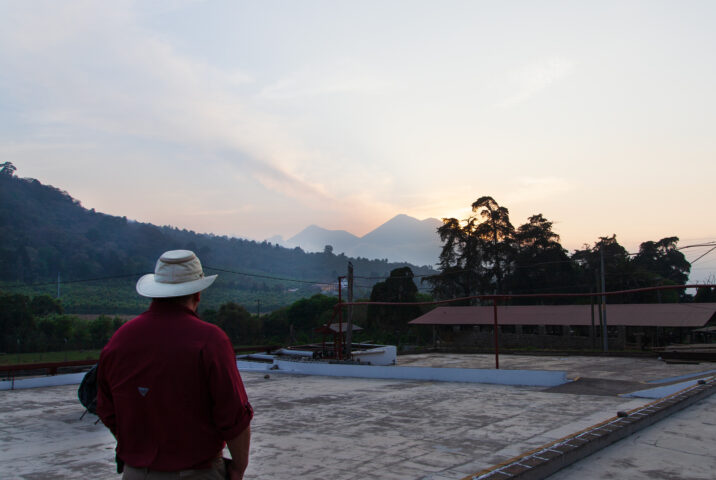Calahute
Toffee apple, panela sugar and almond butter. Great sweetness and body, with a buttery mouthfeel.
Calahute is owned by the Anzueto family, who purchased the land and planted it with coffee in 1952. Today, it is managed by third-generation coffee producer Alfonso Anzueto, who inherited the farm from his father.
Calahute (which translates to “Free Deer”) is located in Huehuetenango, a stunning region located in the west of Guatemala near the border of Mexico. To reach the estate, a steep road ascends the side of El Tapón Mountain in Huehuetenango and eventually rises to the town of San Pedro Necta. The verdant hills surrounding the town centre are home to many independent farmers, who grow coffee as their primary source of income.
The estate is relatively large for this region (most of the producers in San Pedro Necta have very small farms), with 210 hectares (out of a total 226) dedicated to coffee. While this lot is made up of Bourbon and Caturra, a number of other varieties are grown on the estate, including Catuai, Pacamara, Tekisik, Typica — and more recently, rare varieties like Sidra and Parainema have been introduced. Alfonso has also planted what he calls “an Ethiopian heirloom plot,” made up of various Ethiopian varieties he has gathered over the years that are grown with minimal management, “to see which ones thrive,” he explains. Because the estate is over 50 years old and quite large, Alfonso and his team are still uncovering treasures on a regular basis. Their most recent discovery was a pair of old Pacamara trees, that looked different to the ones they had recently planted at a different plot. They’ve now decided to reproduce these trees because of their excellent cup quality and great adaptability to Calahute’s soil.
Calahute sits at an elevation of 1,300–1,500m above sea level, with an average temperature of 18–25°C, and an annual rainfall of 1,300–1,800mm. The coffee grows under a dense and very lush canopy of native shade trees which protect the coffee plantation from the sun and provide valuable organic material, keeping the soil moist and well-nourished. Unlike many other larger estates in Guatemala, Alfonso does not prune these shade trees, recognising the value they bring to the farm’s biodiversity and the overall health of the coffee trees.
We saw this firsthand on a recent visit to Calahute: the plantation was lush and fertile — and we have never seen so many butterflies floating around a coffee farm! To help further enhance this diverse ecosystem, Alfonso has dedicated three plots within the farm to bees, and built 100 boxes for them. The result of these initiatives is very positive – less chemicals are needed on the farm, a safe habitat has been created for animals and plants to thrive in, and the quality and consistency of the resulting coffees have only improved.
Like many of HueHue’s farmers, Alfonso has been dealing with staff shortages due to immigration in recent years. To manage this, he has made the decision to diversify his crop and increasing its value, while decreasing the total amount of coffee he produces. His success has perked up the interest of neighbours who have offered to sell him their land, even though Alfonso has no interest in taking on an expansion. After all, he’s an incredibly busy man — when he’s not at Calahute, he’s roasting coffee for the small café he runs with his family, “Cafe de Don Alfonso.” Named after his father, Alfonso Sr., the shop has quickly become a favourite amongst locals. For Alfonso, the café is the perfect avenue to celebrate coffee from Calahute, and hone in on his roasting skills.
ABOUT HUEHUETENANGO
Huehuetenango (or HueHue as it is often called) is a stunning region located in the west of Guatemala near the border of Mexico. HueHue is known for being home to the Cuchumatanes mountain range, the highest non-volcanic mountain range in Central America, and for its vast ethnic diversity, which includes the Mam, Q’anjob’al, Chun and Jakalteko people. Before the Spanish invasion, the region was known as Xinabajul, which translates to “between ravines” in the local Mam language and is a reference to the numerous cliffs and steep hills found throughout the department. Pre-colonisation, the region’s largest city was Zaculeu (found in the outskirts of modern Huehue City), which translates to “white earth,” and whose ruins can still be visited today.
The department is vast, and includes a number of types of terrain that are suited to different forms of agriculture, depending on the elevation. Corn is the main staple of the lower regions, which transitions into coffee the further up one goes, with local pine farmed throughout the entire department. Huehue’s coffee-growing regions produce some of the most complex and celebrated lots in the country, and the region frequently appear in the top ten of the Cup of Excellence competition. This is in part due to the incredibly high elevations that coffee can grow (up to 2,000m above sea level), thanks to the dry, hot winds that blow into the mountains from Mexico’s Tehuantepec plain and protect the region from frost. These high elevations combined with a relatively predictable climate make for exceptional quality coffee. The highest elevations in Huehue, above 2,100m above sea level, are quite dry and rocky, so most farmers dedicate themselves to growing potatoes and herding sheep, goats and llamas.
HOW THIS COFFEE WAS PROCESSED
Harvest time at Calahute begins in December and concludes at the end of April. Around 120 people from the surrounding villages are employed during this time, which helps sustain the local economy. These seasonal workers are trained in best-picking techniques and select only the perfectly ripe cherries. All operations at the farm are overseen by Alfonso and his manager Víctor Martínez, who has worked with the Anzueto family for many years.
This coffee was processed using the washed method at the family’s wet mill, which was built on the farm in 1958. At the end of the day, each worker delivers their carefully selected coffees to the mill, where they are hand-sorted before being weighed, pulped and fermented for 24–36 hours. The beans are then washed, graded by weight in long channels, and carefully dried on patios for 7 -12 days. Because Alfonso realises the final days of drying are crucial to the long-term quality of the coffee, once it is close to its 11% target, the coffee is covered from direct sunlight at noon and only dried in patio once the sun begins to set in order to lengthen the drying process.
WHY WE LOVE IT
Calahute is one of the healthiest, most biodiverse farms we have ever visited in HueHue. Alfonso’s long-term dream is to become recognised as a quality-focused leader in the San Pedro Necta region — and given his placing at Guatemala’s 2024 Cup of Excellence competition (the first ever for Calahute), he is well on his way to succeeding at this!
